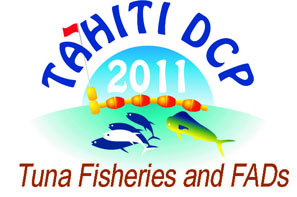Islands and FADs; just how sticky are they?
3 : University of Hawaii
Hawaii -
États-Unis
1 : Hawaii Institute Of Marine Biology
University Of Hawaii -
États-Unis
2 : Institut de Recherche pour le Développement
(IRD)
* : Corresponding author
UMR 212, P.o. Box 570, Victoria -
Seychelles
A wide range of projects have examined the habitat preferences and range of movement of yellowfin tuna (Thunnus albacares) in the central Pacific centered on the Hawaiian archipelago utilizing conventional, acoustic and data archiving tags. Evidence to date from all tag types indicates restricted movement parameters for yellowfin tuna in Hawaiian waters which can also be described as a strong aggregative behavior to isolated islands. Conventional tag studies indicate a high proportion of recaptures reported from anchored FADs and nearshore banks in the Hawaiian EEZ suggesting that FADs play a significant role in the behavior of “Hawaiian” yellowfin tuna. However, these high recapture rates are confounded by high vulnerability at FADs. Coded sonic tagging of individuals monitored by acoustic receivers mounted on nearshore Hawaiian FADs suggest that they can significantly alter behavior with a high proportion of time at liberty spent within the monitored array. However, archival datasets from yellowfin tuna released on these same FADs suggest that yellowfin can also spend considerable amounts of time in offshore “open water” areas away from islands, banks or FADs. A unique recapture dataset of yellowfin tuna double tagged with acoustic and archival tags provides the opportunity to evaluate the accuracy of light based geolocation at fine temporal scales when the animal was acoustically recorded at a receiver equipped anchored FAD. These comparisons support the importance that anchored FADs can play in the behavior and vulnerability of yellowfin tuna while reminding the research community of the practical limitations of light-based geolocation.

 PDF version
PDF version
